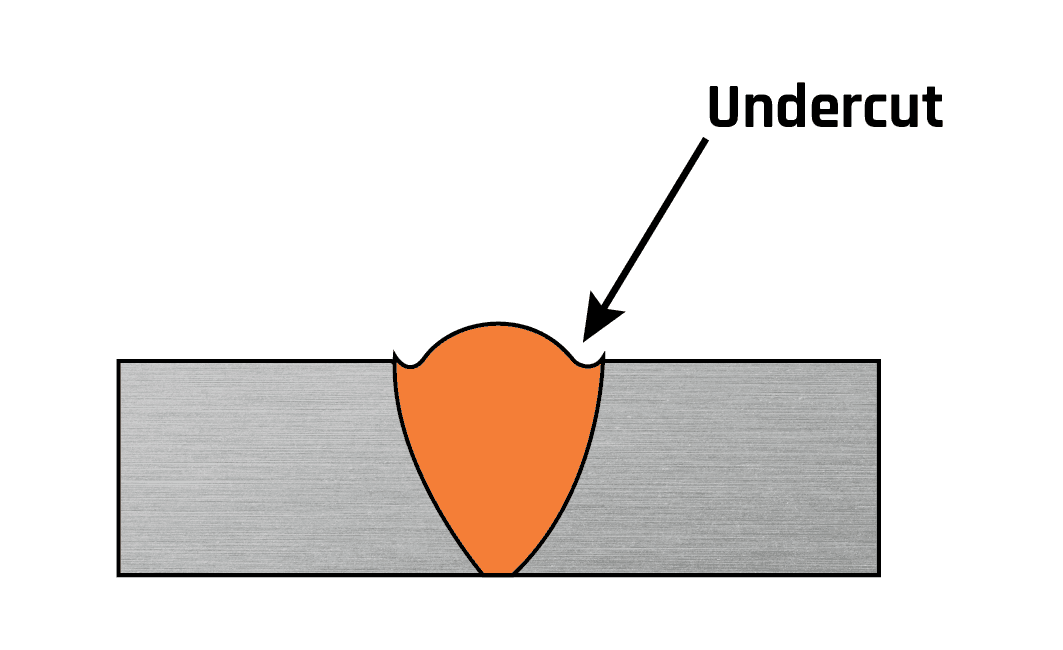How to Prevent Weld Undercut: Vital Tips for Welders
How to Prevent Weld Undercut: Vital Tips for Welders
Blog Article
Mastering the Art of Welding: Exactly How to Prevent Undercut Welding Issues for Flawless Fabrication Results
By recognizing the origin triggers of undercut welding and carrying out efficient techniques to prevent it, welders can raise their craft to brand-new levels of excellence. In the search of perfect construction results, understanding the art of welding to prevent undercut problems is not simply an ability but a requirement for those aiming for excellence in their job.
Recognizing Undercut Welding

To avoid undercut welding, welders ought to make sure appropriate welding parameters, such as readjusting the existing, voltage, travel rate, and keeping the right electrode angle. By recognizing the causes of undercut welding and executing precautionary actions, welders can attain high-quality, structurally sound welds.
Root Causes Of Undercut in Welding
Understanding the aspects that add to damage in welding is necessary for welders to generate top notch, structurally audio welds. Undercutting happens when the weld metal does not properly fill the groove formed between the base steel and the previously transferred weld steel. A number of elements can bring about undercut in welding. One usual cause is extreme heat input. Welding at heats for extended durations can lead to the base steel melting greater than desired, leading to undercut. Poor welding present or incorrect welding speed can likewise add to damage. Not enough current may not offer enough warm to thaw the base and filler steels properly, while too much rate can stop proper blend, triggering undercut. Additionally, incorrect electrode angles or wrong lantern adjustment strategies can create locations of reduced weld steel deposition, advertising undercut. Comprehending these reasons and carrying out proper welding strategies can help stop undercutting concerns, ensuring strong and sturdy welds.
Strategies to stop Undercutting

To reduce the threat of undercutting in welding, welders can employ tactical welding techniques aimed at boosting the top quality and integrity of the weld joints. Additionally, using the appropriate welding technique for the specific joint configuration, such as weave or stringer beads, can add to reducing damaging.
Moreover, correct joint prep work, consisting of ensuring clean base materials without impurities and using the suitable welding consumables, is essential in preventing undercut flaws. Using back-step welding strategies and regulating the weld grain account can additionally aid distribute warmth evenly and reduce the threat of undercut. Normal assessment of the weld joint throughout and after welding, along with applying quality control measures, can assist in finding and attending to damaging concerns quickly. By carrying out these methods diligently, welders can achieve flawless manufacture results with minimal undercut problems.
Value of Proper Welding Parameters
Choosing and keeping appropriate welding specifications is important for attaining effective welds with marginal issues. Welding specifications refer to variables such as voltage, current, take a trip rate, electrode angle, and shielding gas circulation rate that straight affect the welding procedure. These parameters must be carefully changed based on the sort of material being bonded, its density, and the welding method utilized.
Appropriate welding parameters ensure the correct amount of warmth is put on melt the base steels and filler product consistently. published here If the specifications are set as well high, it can lead to excessive heat input, causing burn-through, distortion, or spatter. On the various other hand, if the parameters are as well low, incomplete blend, absence of penetration, or undercutting might happen.
Quality Assurance in Welding Operations

Verdict
To conclude, understanding the art of welding calls for a thorough understanding of undercut welding, its causes, and methods to prevent it. By making certain correct welding criteria and implementing quality assurance practices, remarkable construction outcomes can be achieved. It is necessary for welders to constantly pursue excellence in their welding procedures to avoid undercut issues and generate top notch welds.
Undercut welding, an usual defect in welding procedures, takes place when the weld steel does not effectively fill the groove and leaves a groove or clinical depression along the welded joint.To avoid undercut welding, welders should make sure helpful hints correct welding criteria, such as changing the current, voltage, traveling speed, and maintaining the proper electrode angle. Inadequate welding current or wrong welding speed can additionally contribute to undercut.To mitigate the risk of damaging in welding, welders can employ strategic welding strategies intended at boosting the top quality and honesty of the weld joints.In conclusion, grasping the art of welding requires a comprehensive understanding of undercut welding, its causes, and strategies to stop it.
Report this page